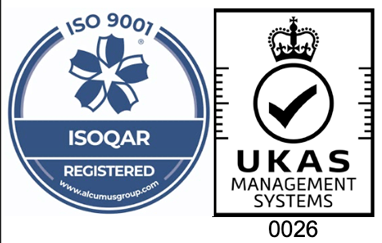Maintaining and Extending the Lifespan of Your Road Sweeper
29th September, 2025
Local councils are responsible for using road sweepers to remove litter, debris and as we move into autumn, fallen leaves, from public roads and pavements to ensure safe conditions, prevent hazards and reduce environmental pollution.
Road sweepers are estimated to have a lifespan lasting eight to 12 years, and sometimes even longer, with proper maintenance, regular cleaning and repairs and refurbishments when necessary. Since road sweepers use materials made from rubber or polyurethane, it is important to ensure you know where to find spare parts for your sweeper and when the best time is to buy road sweeper spares.
At Aquaseal Rubber, we manufacture and provide a range of road sweeper spares to clients who are looking for bespoke rubber or polyurethane solutions for their application to help ensure public safety and optimal operations of a sweeper.
This guide will highlight what a road sweeper does, the materials used in road sweeper spares and how to maintain your road sweeper to maximise and expand its lifespan.
What is a road sweeper?
A road sweeper is a specialised vehicle equipped with brushes, water jets and air suction to collect dirt, debris and litter from public roads and other hard surfaces, like construction sites. Road sweepers are used all year round to collect debris and little from pavements and roads, but they are especially important in the autumn and winter months when leaves begin to fall from trees, leading to wet and slippery walking and driving conditions.
Road sweepers use water jets to loosen dirt and debris from the road surface and then, one or more rotating brushes sweep the loosened particles onto a conveyor belt or into a suction tube. This debris is then transferred to a storage container in the vehicle before it is disposed of.
What materials can be used for road sweeper spare parts?
Rubber is used extensively in road sweepers because of its durability, flexibility and long lifespan in a range of applications on a sweeper include rubber seals, rubber gaskets, suction hoses and sweeper flaps.
These materials also include polyurethane, a type of man-made elastomer produced through the synthetic rubber production process, which is an ideal choice of material because of its durability, flexibility, abrasion, chemical and environmental resistance.
At Aquaseal Rubber, we use four types of rubber to manufacture and provide our clients with road sweeper spares based on their custom requirements.
Polyurethane
Polyurethane is one of several different types of synthetic rubber. Often selected over rubber because of its extreme hardness – making it closer to a metal than rubber would be – polyurethane is a lightweight, cost-effective alternative material.
It is used in spare parts for road sweepers because it can be moulded into virtually any shape and is resistant to abrasion, tears, chemicals and environmental factors. With harsh temperatures and wet surfaces to consider due to debris and fallen leaves when preparing our region for the winter ahead, road sweepers are likely to face a range of weather conditions.
Nitrile
Also a synthetic rubber, nitrile is widely used for rubber seals, oil resistant applications and hydraulic applications. Although not resistant to ozone or extreme heat, nitrile is compatible with petroleum products meaning it is a common choice for the parts of a road sweeper which encounter road debris, fallen leaves and machine fluids.
Nitrile is resistant to oils, fuels, solvents, water and abrasion, making it a perfect material for the operating conditions of a road sweeper.
Natural Rubber
Natural rubber is obtained from latex and is used in road sweepers for the bristles or road sweeper brushes and hoses for suction and debris collection.
This material is durable and flexible, but also has a smooth surface which makes it easy to maintain and clean, and therefore maximising and extending the lifespan of a road sweeper.
Neoprene
Neoprene rubber has several benefits which make it the ideal choice for use in road sweeper parts. It is resistant to water and moisture, meaning the performance of neoprene parts will not be affected by wet leaves and damp road surfaces and cushions shock absorption, meaning it can get into tight areas on the roads, like kerbs, without getting damaged.
Neoprene is resistant to general wear and tear from daily operation, which helps to extend the lifespan of road sweeper parts made from this material.
Road sweeper parts may contain rubber, but many parts also have casings of sponge rubber to prevent water and air passing through the vehicle, as well as providing cushioning and noise absorption. We manufacture a range of sponge and foam products at Aquaseal which can also be used in your road sweeper.
Maintaining the condition of your road sweeper
Maintaining the condition of your road sweeper parts is critical for ensuring optimal performance and safe operations. There are several ways to manage and maintain the parts of a road sweeper.
Regular cleaning and debris removal
A crucial aspect of maintaining a road sweeper involves regular cleaning and inspections of different parts of the vehicle, both before and after the road sweeper is used.
Before use, carry out the following pre-operation checks:
- Examine brooms and brushes for any trapped debris and remove it to ensure proper function
- Check the water filter for any leaks and the overall cleanliness, since dirty water can indicate other damage
- Ensure the engine and hydraulic fluid levels are correct; too much or too little fluid can damage the engine
- Look for any leaks, or signs of leaks, especially from water, since these could lead to further significant damage
- Inspect the vehicle for any loose nuts and bolts that may have been impacted during operation due to vibration
After operating your road sweeper, you should:
- Empty the debris hopper to prepare the machine for its next operation and to ensure all rubbish is removed
- Wash the sweeper to remove any dust or dirt from the exterior, but also ensure any other parts have been cleaned if they have been in contact with extreme dirt
Regular inspections of your road sweeper will ensure efficiency, support compliance and safety, and extend the lifespan of the vehicle.
Water system maintenance
As well as checking for any leaks within your road sweeper, you should regularly inspect and clean the water tank, its filters and pump components to prevent debris damage and ensure proper dust suppression and operation.
On a regular basis, you should:
- Check and clean the water filter every three to seven days
- Run the low-pressure pump dry to clear water and prevent damage from freezing
- Drain the water tank after use to avoid water accumulation
- Inspect water hoses and fittings for signs of leaks or damage
Every so often, you must drain the tank fully and inspect the high-pressure water pump for damage to its valves and seals, leaving the drain taps open to prevent issues.
During winter months, draining water components and using anti-freeze is crucial to maintain your road sweeper to protect it from freezing conditions.
Storage recommendations
When your road sweeper is not in use, it is important to store the vehicle correctly to prevent any damage from occurring and to extend the lifespan by ensuring an appropriate condition for the vehicle.
You should keep it in a dry, covered area, away from flammable materials. All moving parts should be lubricated and shields should be applied to metal surfaces to prevent corrosion, especially in low temperatures, to ensure performance is optimal once the road sweeper returns to service.
The brooms and brushes should also be kept in a dry and covered area, stored upright in a moderate temperature to prevent the compromise of material durability. Also, be sure not to stack brooms, as this can lead to uneven wear.
Replacing rubber or polyurethane on your road sweeper
Replacing worn out parts of a road sweeper can be a cost-effective way to extend the lifespan of your road sweeper, with most councils choosing to refurbish and modify their sweepers so they don’t need to buy new models.
By conducting regular inspections, you will be aware of any problems or issues with certain parts of your road sweeper. If you find any damaged parts or any pieces suffering from wear and tear that is becoming harder to maintain, you must consider working with an expert rubber manufacturer to implement suitable rubber or polyurethane road sweeper spares. This will help to maintain and extend the lifespan of your road sweeper.
Choosing Aquaseal for your rubber or polyurethane road sweeper parts
Maintaining your road sweeper is essential for the safe operation of collecting debris from public pavements and roads to ensure safety for road users. By conducting regular inspections and cleaning, water system maintenance and correctly storing your road sweeper, you will be able to extend the lifespan of the rubber or polyurethane materials in your sweeper.
At Aquaseal Rubber, we are proud to support clients with replacement rubber and polyurethane parts for their bespoke applications. If your road sweeper is ready for an update to improve its condition, contact us today to discuss your needs and see how we can help you.


